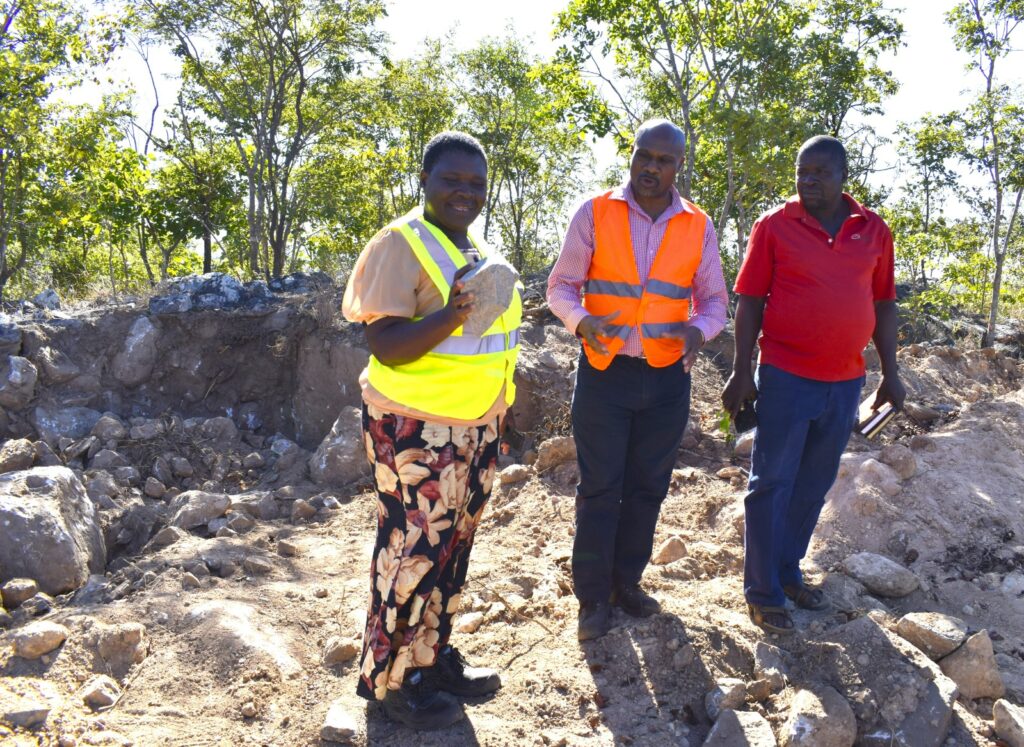
Mining & Trade News
Malawi Online News
Top Stories
Mining
Local refinery for Kanyika Niobium Project
March 28, 2024 / Marcel Chimwala

Globe Metals and Mining Limited has announced that it plans to produce high-grade Niobium and Tantalum products in Malawi at a Lilongwe-based refinery, and is in discussion with the Government of Malawi regarding the financial incentives and location for the new plant.
The announcement by Globe meets Malawians’ long-expressed wishes for local value-addition, instead of seeing the country’s mineral resources routinely exported overseas to be transformed into high-value saleable products.
By producing Niobium and Tantalum oxides within Malawi for export to world markets, the Kanyika Mine will add significantly to the country’s foreign exchange earnings, boosting the Balance of Payments account and raising the National GDP.
The move by Globe follows extensive research and test-work over the past many months, reviewing and fine-tuning refining technologies to optimise engineering designs for the mining and concentrate recovery processes which are aimed at maximising value from the Kanyika orebody.
By changing the refining technology to a benign process based on the use of chlorine – which is environmentally sustainable and cost-effective – Globe will be able to produce high purity products that attract premium prices from international buyers in the speciality metals markets.
The benign chlorination technology was perfected by Globe’s research partners, and its use in Malawi to produce high-purity metal oxides will replace the original plan for Hydrofluoric Acid (HF) recovery process at a refinery to be located in the UAE.
(Note: Hydrofluoric acid is extremely poisonous and corrosive, and is fatal if inhaled or swallowed- it requires extensive neutralisation before wastes may be safely disposed.)
Globe’s engineering design has focused on optimisation of the milling and concentration circuits, with greater efficiencies and recovery rates achieved through innovative improvements to the milling and flotation circuits. One example is the reduction of reagents in the revised flotation suite from the initial 12 to only 4 reagents required. (Reagents are special chemicals used in the recovery flotation process, and represent a significant cost as they are not available in Malawi and must be imported.)
The refinery process available to Kanyika’s production also allows for the recovery of materials other than Niobium/Tantalum, and offers Globe wider opportunities that include refining for mining operations in Malawi and in neighbouring states.
Current projections for the Mine envisage an initial Phase 1 lasting 3 years, requiring US$29 million capital expenditure and producing 1,760 tons per year of concentrate. Kanyika’s concentrate will be transported to the planned refinery in Lilongwe where high-grade oxides will be produced. Annual turnover in Phase 1 is estimated at US$20m.
The Mine will ramp-up after the 3-year Phase 1, expanding capacity during Phase 2 to 1.5 million tons-per-year (mtpa), and producing 17.7 k/tpa of concentrate for the planned Lilongwe refinery. Annual turnover in Phase 2 is estimated at US$205m, and the life of the Kanyika Mine will be extended by three years – effectively until around 2050 – as a result of the Phase 1 interlude.
Globe is currently pursuing funding for this project and has in recent months attended investor conferences in South Africa and Australia. Once the funding is in place, construction at the Kanyika mine site will begin.
Niobium has many applications in the New Economy Aerospace, and Niobium alloys NiNb and Vacuum Grade are used in aerospace and defence industries due to their high strength, low density, and resistance to temperature extremes.
Niobium is also used in the Nuclear industry due to its high-temperature absorption, strength and resistance to corrosion. It is used in reactor components, fuel elements and surface acoustic wave devices. Thermo-Power Niobium is used in Ultra Temperature Thermal Power, due to high-temperature and corrosion resistance, also in high temperature pipes.
Super Conductor Niobium metal is used as superconductors in particle accelerators, such as the CERN Large Hadron Collider in Switzerland (CERN is the acronym for the French “Conseil Européen pour la Recherche Nucléaire“, or European Council for Nuclear Research.)
EV Batteries: As the green energy transition gathers pace, Niobium’s use in electric vehicle batteries has the potential to decrease charging times, increase range, improve battery life and maximise performance. Niobium oxide makes batteries greener, cheaper and cleaner.
Niobium oxide increases the energy density of batteries by ultra-fast charging, and Niobium oxide batteries are more stable because of their ability to withstand extremely high temperatures. Toshiba’s Niobium Titanium Oxide (NTO)-SCIB battery provides a range of up to 320km, reaches 90% charged capacity after six minutes, and fast charges to 80% capacity after 25,000 charging cycles. At lower operating temperatures Niobium oxide batteries can be fully charged in less than 10 minutes – versus 6 hours for conventional EV batteries.
Niobium oxide is used for specialised ophthalmic lenses, because it combines the advantages of high refractive index and relatively low value of specific gravity for a glass. Additionally, 65% of Niobium is used in ferro-niobium’s production of High Strength Low Alloy (HSLA) steel.
Globe is well pleased with the outcome of the research and design work carried out by specialist scientists in laboratories in South Africa. With such highly satisfactory results, the Kanyika Mine is now on a secure and financially viable track and promises to deliver benefits over many years both to the Malawi nation and to the investors in the project, all of whom have waited patiently for a long time to arrive at this exciting and positive point.































